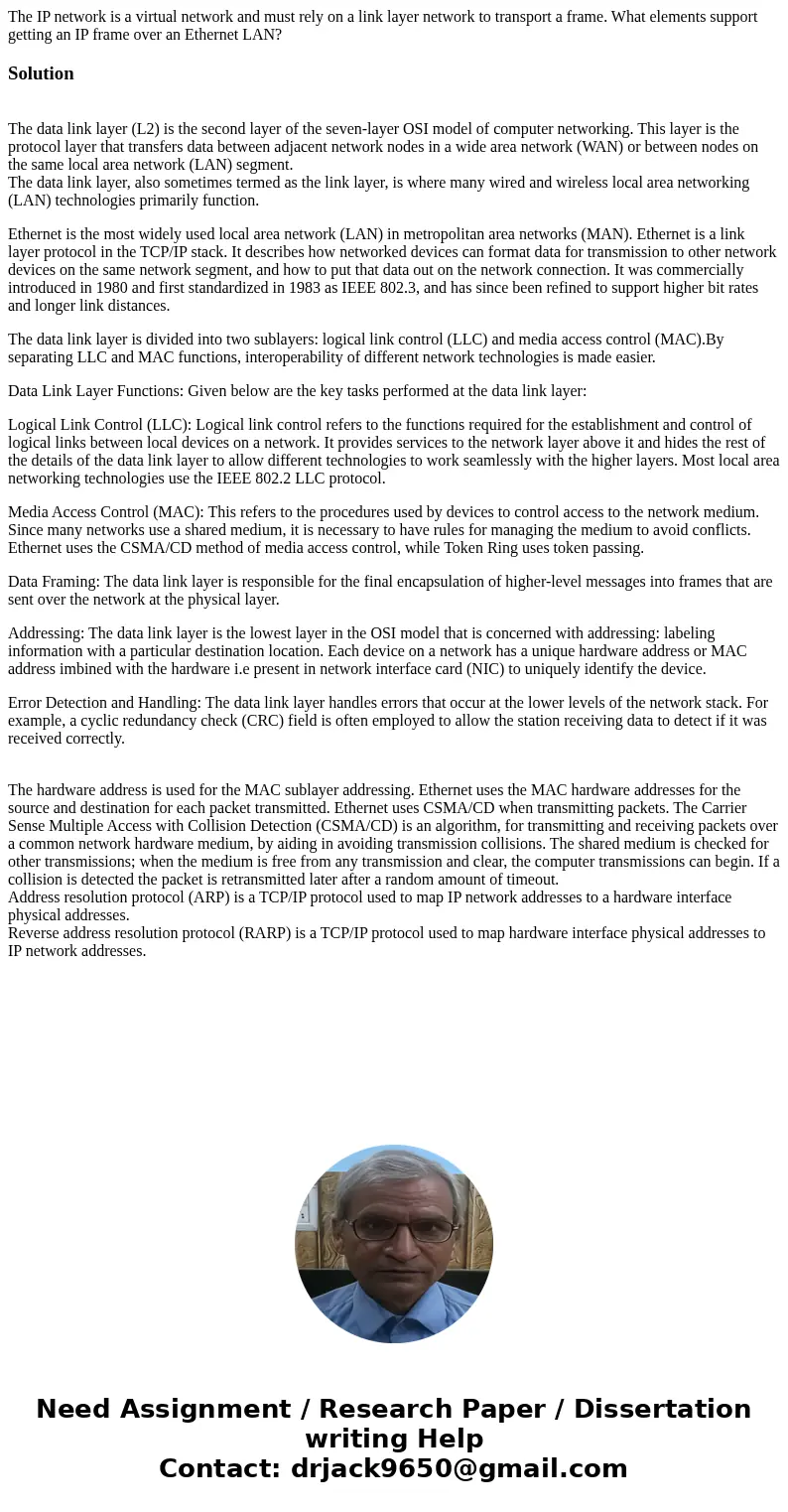The IP network is a virtual network and must rely on a link
The IP network is a virtual network and must rely on a link layer network to transport a frame. What elements support getting an IP frame over an Ethernet LAN?
Solution
The data link layer (L2) is the second layer of the seven-layer OSI model of computer networking. This layer is the protocol layer that transfers data between adjacent network nodes in a wide area network (WAN) or between nodes on the same local area network (LAN) segment.
The data link layer, also sometimes termed as the link layer, is where many wired and wireless local area networking (LAN) technologies primarily function.
Ethernet is the most widely used local area network (LAN) in metropolitan area networks (MAN). Ethernet is a link layer protocol in the TCP/IP stack. It describes how networked devices can format data for transmission to other network devices on the same network segment, and how to put that data out on the network connection. It was commercially introduced in 1980 and first standardized in 1983 as IEEE 802.3, and has since been refined to support higher bit rates and longer link distances.
The data link layer is divided into two sublayers: logical link control (LLC) and media access control (MAC).By separating LLC and MAC functions, interoperability of different network technologies is made easier.
Data Link Layer Functions: Given below are the key tasks performed at the data link layer:
Logical Link Control (LLC): Logical link control refers to the functions required for the establishment and control of logical links between local devices on a network. It provides services to the network layer above it and hides the rest of the details of the data link layer to allow different technologies to work seamlessly with the higher layers. Most local area networking technologies use the IEEE 802.2 LLC protocol.
Media Access Control (MAC): This refers to the procedures used by devices to control access to the network medium. Since many networks use a shared medium, it is necessary to have rules for managing the medium to avoid conflicts. Ethernet uses the CSMA/CD method of media access control, while Token Ring uses token passing.
Data Framing: The data link layer is responsible for the final encapsulation of higher-level messages into frames that are sent over the network at the physical layer.
Addressing: The data link layer is the lowest layer in the OSI model that is concerned with addressing: labeling information with a particular destination location. Each device on a network has a unique hardware address or MAC address imbined with the hardware i.e present in network interface card (NIC) to uniquely identify the device.
Error Detection and Handling: The data link layer handles errors that occur at the lower levels of the network stack. For example, a cyclic redundancy check (CRC) field is often employed to allow the station receiving data to detect if it was received correctly.
The hardware address is used for the MAC sublayer addressing. Ethernet uses the MAC hardware addresses for the source and destination for each packet transmitted. Ethernet uses CSMA/CD when transmitting packets. The Carrier Sense Multiple Access with Collision Detection (CSMA/CD) is an algorithm, for transmitting and receiving packets over a common network hardware medium, by aiding in avoiding transmission collisions. The shared medium is checked for other transmissions; when the medium is free from any transmission and clear, the computer transmissions can begin. If a collision is detected the packet is retransmitted later after a random amount of timeout.
Address resolution protocol (ARP) is a TCP/IP protocol used to map IP network addresses to a hardware interface physical addresses.
Reverse address resolution protocol (RARP) is a TCP/IP protocol used to map hardware interface physical addresses to IP network addresses.

 Homework Sourse
Homework Sourse